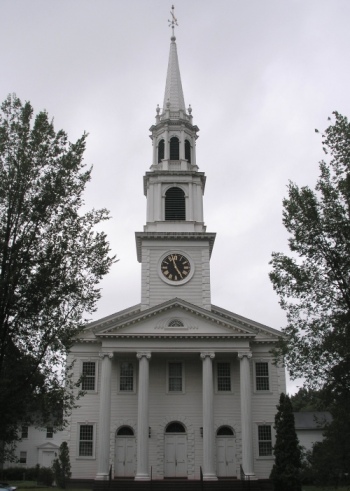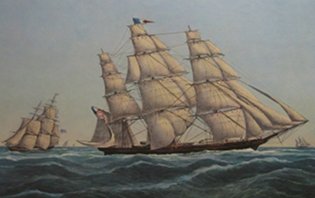A repost from last year -
 From Joseph Bottum at First Things. A quote:
From Joseph Bottum at First Things. A quote:
He begins:
America was Methodist, once upon a time—Methodist, or Baptist, or Presbyterian, or Congregationalist, or Episcopalian. A little light Unitarianism on one side, a lot of stern Calvinism on the other, and the Easter Parade running right down the middle: our annual Spring epiphany, crowned in bright new bonnets.
The average American these days would have trouble recalling the dogmas that once defined all the jarring sects, but their names remain at least half alive: a kind of verbal remembrance of the nation’s religious history, a taste on the tongue of native speakers. Think, for instance, of the old Anabaptist congregations—how a residual memory of America’s social geography still lingers in the words: the Hutterites, Mennonites, and Amish, set here and there on the checkerboard of the nation’s farmland. The Quakers in their quiet meetinghouses, the Shakers in their tiny communes, and the Pentecostals, born in the Azusa Street revivals, like blooms forced in the hothouse of the inner city.
And yet, even while we may remember the names of the old denominations, we tend to forget that it all made a kind of sense, back in the day, and it came with a kind of order. The genteel Episcopalians, high on the hill, and the all-over Baptists, down by the river. Oh, and the innumerable independent Bible churches, tangled out across the prairie like brambles: Through most of the nation’s history, these endless divisions and revisions of Protestantism renounced one another and sermonized against one another. They squabbled, sneered, and fought. But they had something in common, for all that. Together they formed a vague but vast unity. Together they formed America.
and
...somewhere around 1975, the main stream of Protestantism ran dry. In truth, there are still plenty of Methodists around. Baptists and Presbyterians, too—Lutherans, Episcopalians, and all the rest; millions of believing Christians who remain serious and devout. For that matter, you can still find, soldiering on, some of the institutions they established in their Mainline glory days: the National Council of Churches, for instance, in its God Box up on New York City’s Riverside Drive, with the cornerstone laid, in a grand ceremony, by President Eisenhower in 1958. But those institutions are corpses, even if they don’t quite realize that they’re dead. The great confluence of Protestantism has dwindled to a trickle over the past thirty years, and the Great Church of America has come to an end.
And that leaves us in an odd situation, unlike any before. The death of the Mainline is the central historical fact of our time: the event that distinguishes the past several decades from every other period in American history. Almost every one of our current political and cultural oddities, our contradictions and obscurities, derives from this fact: The Mainline has lost the capacity to set, or even significantly influence, the national vocabulary or the national self-understanding.
Read the whole thing.


 From Joseph Bottum at First Things. A quote:
From Joseph Bottum at First Things. A quote: